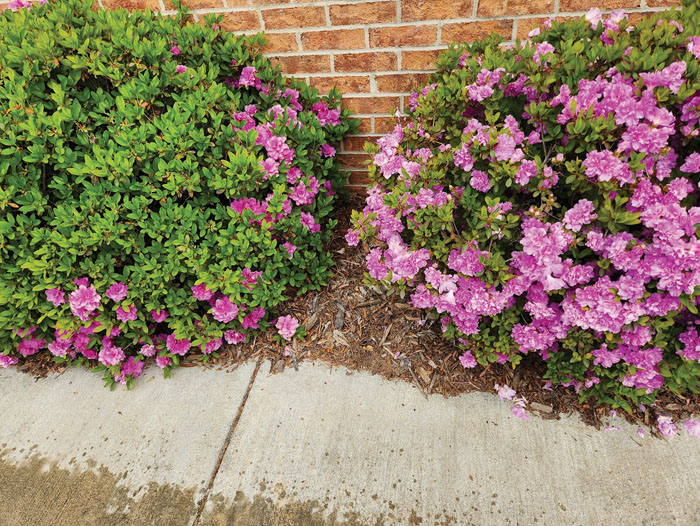Darrell Blackwelder: What to do when azaleas won’t bloom
Published 12:00 am Saturday, April 27, 2024

- Azaleas
It seems a very good year for blooming trees and shrubs. Many are in awe over the cascade of blooms. However, I’ve spoken to a friend of mine at breakfast one morning and it seems that his azaleas did not bloom as they normally did last year. They were well cared for but lacked the prolific blooms as experienced during past spring seasons. In some situations, the lack of blooms can be caused by nature or by overly zealous gardeners. Below are a few reasons for scarce azalea blooms:
Pruned at the wrong time. Azaleas need to be pruned right after they have bloomed. Encore azaleas need pruning after they bloom in the spring. Never prune after July 4, as they set their buds in mid to late summer.
Fertilizer applications. High rates of nitrogen fertilizer promote green vegetative growth and reduce bud set. The energy from the nutrients goes into foliage and not setting flowers. Use a acid type fertilizer that is high in phosphorus (the middle number on the fertilizer container). Apply a balanced fertilizer in early spring before they begin to bloom.
Lack of moisture. Many azalea varieties set their buds in mid to late summer when rainfall may be scarce. It’s important to make sure all plants, including azaleas, receive a sufficient amount of water during late summer to maximize bud set.
Poor sunlight. Many azalea varieties require at least 6 hours of full sunlight per day to perform the best. Plants in low sunlight will have scarce blooms. Some of the newer varieties grow well in full sunlight, while others need a shade in the afternoon heat. Proper sunlight placement of these plants is important.
Improper soil pH. Azaleas, rhododendron and many other plants require an acidic soil pH. Be very careful when applying lime to lawns and other plants and avoid applications near or around azaleas and other acid-loving plants. These grow best in well drained, organic soils with a pH of 4.5 to 6.0. Have the soil tested and adjust, if necessary, before planting.
Darrell Blackwelder is the retired horticulture agent and director with the North Carolina Cooperative Extension Service in Rowan County. Contact him at deblackw@ncsu.edu.


